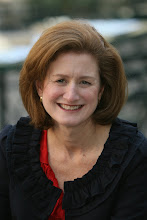Years from now, 2004 will be seen as a watershed for the Internet. It will be known as the year that the demograhpic differences that defined the online world from the unconnected world literally vanished. Those of us who conduct market research online felt the change as it happened. In the old days of 2003, we recruited focus groups based on how long a respondent had been online, this no longer was important. Newbies and old hands responded the same. It seemed the internet population was more and more, like, well like us!
Now there is data to support this conclusion. According to Dr. Jeffrey Cole is Director of the USC Annenberg School Center for the Digital Future, the founder of the World Internet Project (reported first on iMedia) the differences between new and experienced Internet users have almost disappeared and Internet users look more like a subset of the US population as a whole.
In the past, the most experienced users connected over twice as long as the newcomers and were far more likely to be connected through a high-speed connection. Long-time users also connected from more places, both inside and outside the home. New users were much more likely to be looking at chat rooms, playing games and searching for entertainment information and searching for medical information. Experienced users spent much more time than novices buying online, doing work related to their jobs and looking at news online. Fours years ago the average new Internet users did not make an online purchase until they had been online between 18 and 24 months. Prospective shoppers four years ago also did not buy online because they feared the product would not be delivered or would be delivered damaged.
Sometime in late 2003 or early 2004 everything began to change. Now Although long-time users still connect longer, new users are only slightly more likely to be looking at chat rooms or playing games online, and they are Today, Internet users are no longer a subset of America as a wholejust about as likely to be looking at news, entertainment information or doing work related to their jobs. Today, new users buy online almost from the day they get connected. The 18- to 24-month lag period is gone. Both Internet users and non-users believe that prices are lower online and that the availability of products is greater.
The most likely cause four years ago for the vast differences in Internet use by experienced and new users was demographic differences. The earliest Internet users were much more likely to be white or Asian, highly educated, male and with higher incomes. They were also much more technologically inclined. Over the past four years, more and more of America has gone online, with the fastest growing groups being African-Americans and Latinos, females, lower income and those with less education. New users go online knowing what to expect from the Internet having, in many cases, been online before with a friend’s or relative’s connection. New users get down to business much faster than new users of several years ago, with less exploring and experimenting.
The implications - for polling, for research, for online commerce and more are enormous. But in the short-term, I am just happy to be able to answer the inevitable question, 'but is
my audience online?'


